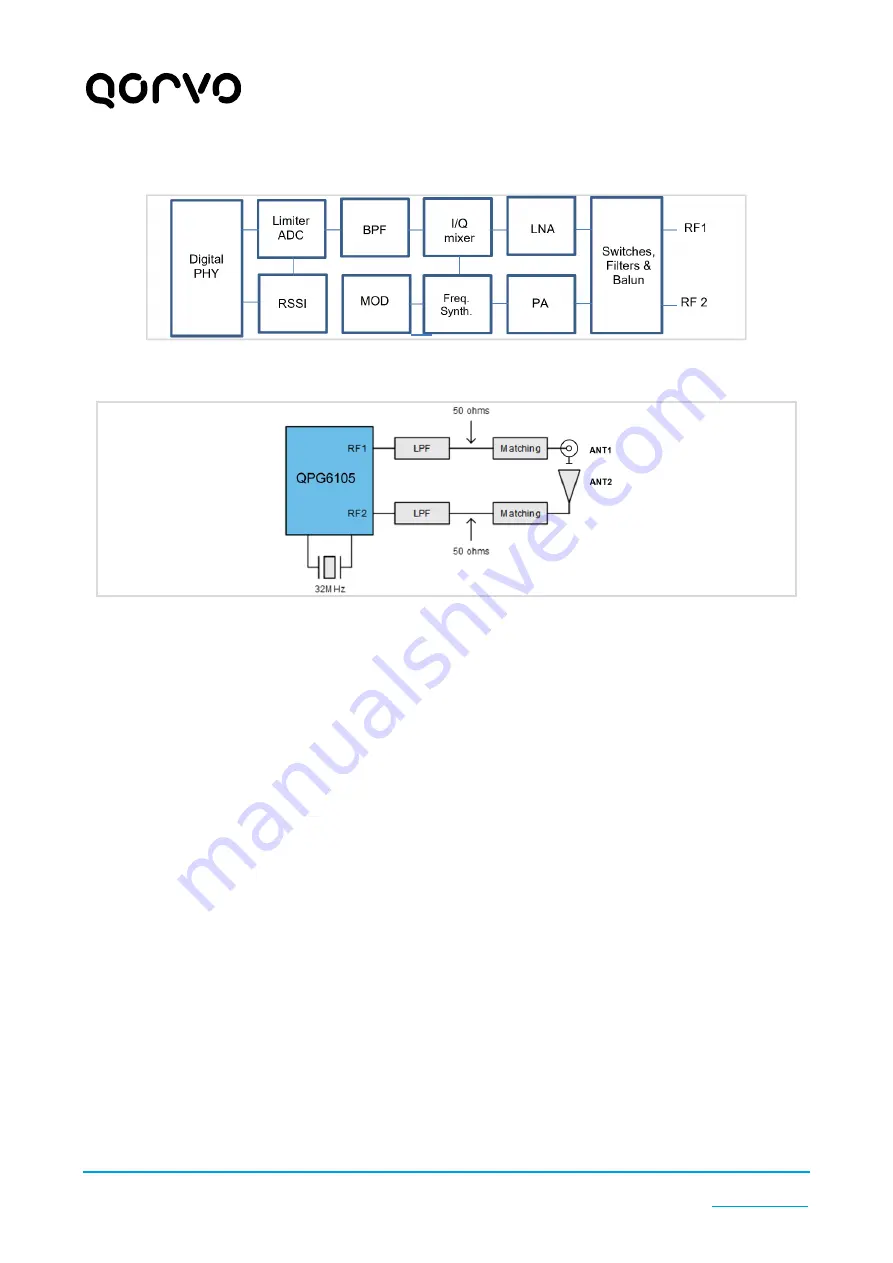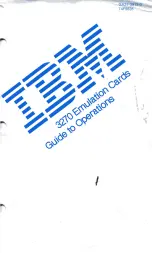
QPE6105A
FCC Certification Guide
– Bluetooth™ Low Energy Mode
Subject to change without notice | All rights reserved. © 2022-2023 Qorvo, Inc.
GP335_UM_20021 Version 1.00
Page
3
of
15
®
2
Block Diagrams and Functional Description
Figure 1: RF Block Diagram of the QPG6105 Chip
Figure 2: RF Block Diagram of the QPE6105A Module with one Embedded Antenna and
one Antenna Pin
2.1
General Description
The QPG6105 chip is an
IEEE 802.15.4 / Bluetooth
Low Energy
Multi-Protocol Multi-Channel
Communications Controller for ultra-low power wireless. It is compliant with the IEEE Standard 802.15.4 for
Zigbee, and the Bluetooth Core Specification version 5.3 for Bluetooth Low Energy.
2.2
Power Regulation
The QPG6105 chip has an integrated power management system using a Global Low Dropout Regulator
(GLDO). This generates an internal 1.8 V power supply. The internal 1.8 V power rail is used to supply
separate local LDO regulators feeding RF/analog and digital blocks. The local LDOs used to supply
RF/analog blocks are specially designed to have high power supply rejection ratio (PSRR) to suppress the
supply ripples.
In case the external supply voltage is too low to deliver the 1.8V internal supply voltage, the QPG6105 chip
will reset and consequently stop all RF communication. This means that RF frequency and RF modulation
will be independent from the supply voltage.
2.3
Frequency Synthesis and Modulation
The QPG6105 chip uses a FLL circuit with a VCO operating at 2 times of the transmit frequency. The VCO
is directly modulated by a Digital Signal Processor (DSP). The modulation is fully compatible with Offset
Quadrature Phase-Shift Keying (O-QPSK) and MSK modulation as used by Bluetooth Low Energy.
The receiver uses a low Intermediate Frequency (IF) scheme, where the IF frequency is 2 MHz.
The formula to calculate the VCO frequency in RX mode can be found in section 3.6.2.
2.4
RF Interface
The QPE6105A module has two RF outputs: RF1 and RF2. Both RF ports are bidirectional and will be used
for both transmit (TX) and receive (RX) mode. The antenna ports outputs are 50
Ω single ended. Only one
antenna is used for RX or TX at the time (i.e., not supporting MIMO). Antenna Diversity is supported in

































